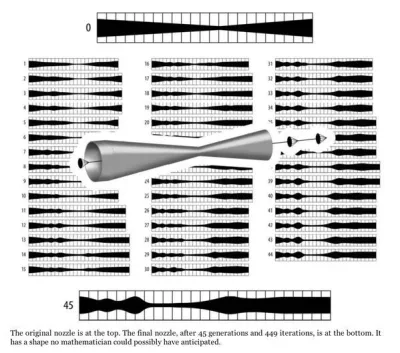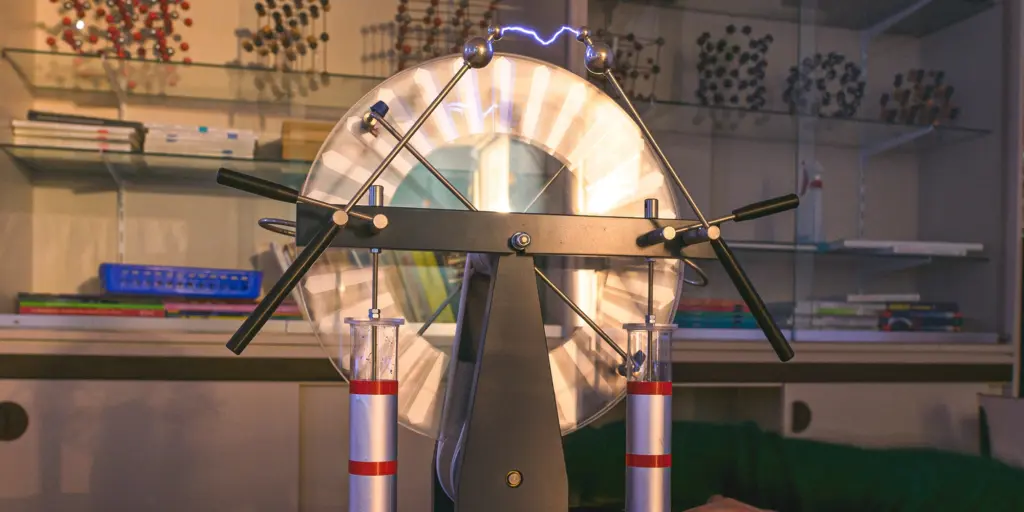Discover how a fail-fast mindset helps design engineers de-risk product innovation, with lessons from Unilever and a cocoa powder separation case study.
Fail-fast engineering: How design engineers can drive innovation through iterative prototyping
Design engineers face growing pressure to innovate faster, smarter and with less waste. This article explores how a fail-fast mindset, through agile prototyping and an unexpected chocolate case study, can improve product development and drive bold ideas forward while minimising risk.
449 Failures – an Introduction
In the 1960s, Unilever’s design engineering team faced a complex product development challenge: to manufacture washing powder, they forced hot chemicals under pressure through a nozzle, which would condense into powder on the other side. But the nozzles were frequently clogging, driving up costs and killing sales.
They initially turned to mathematicians and fluid dynamics experts, who carefully analysed the problem and proposed a new design. It didn’t work.

In desperation, Unilever brought in a team of biologists. They took a different approach: they made 10 copies of the existing nozzle, each with small variations, and tested them. One showed marginal improvement. That version was copied 10 more times, with further tweaks. This cycle was repeated 45 times.

Picture Source – Professor Steve Jones – From the team of biologists who iterated the design
After 449 so-called “failures”, they produced a breakthrough nozzle – one that theory alone couldn’t have delivered.

This story is taken from Matthew Syed’s bestselling book “Black Box Thinking”, which presents the argument that “we progress fastest when we face up to failure”. Fundamentally, this is the basis of modern scientific inquiry. Only when we admit our ignorance, when we know our assumptions have room for error, can we begin investigating empirically.
This sentiment is also well understood by software engineers. The Agile philosophy evolved to allow for adaptability and incremental value gain in the face of changing requirements and unclear scopes. This iterative approach is built upon failure – failing forwards.
“Failing fast” has further become a mantra in Silicon Valley startups for a reason. The basic premise is to act early to derisk potential avenues, rather than investing and losing time and money in a doomed approach. If everybody fails at some point, then take control – fail early when it hurts less and learn from it quickly.
Clearly this approach has merit. So why isn’t this more widely used in physical product engineering? Is it tradition? Or more simply, loss aversion and the fear of failure?
I want to present the argument that a fail-fast approach is a valuable tool, and when used intelligently, should be a necessary part of any design engineer’s toolbox. I’ll break down when and how to use this tool. To do this, I’ll provide a practical example of when I have used it myself – a story about chocolate.
When to use a fail-fast approach in engineering innovation
- Failing fast works best when the problem is “novel”, as Dr Ed Elias puts it, a researcher and entrepreneur at the University of Bath who has written extensively on the subject. Novelty means doing something others haven’t done before, where the requirements aren’t clear from the start. It means problem exploration more than problem solving.
- Our primary objective is to fight Analysis Paralysis. In the face of a complex, novel problem, it can be tempting to take Unilever’s initial mathematical approach. But in these situations, no one can know everything to begin with, and nobody is going to get it right first try.
- So, build that prototype, test the theory, gather that data, and find the unknown unknowns sooner rather than later.
When not to use fail-fast engineering: Knowing the limits of rapid prototyping
While fail-fast can be powerful, it’s not a universal solution. Like any methodology, it works best under the right conditions and can backfire when misapplied. Here’s when to pause before prototyping:
- There is no such thing as a one-size-fits-all approach, in any field, let alone one as broad as engineering.
- Failing fast doesn’t make sense when the solution requirements are well understood by both the designers and the client. In software, there are times when a waterfall model is more efficient than an Agile one.
- And even when failing fast, engineering due diligence should be maintained. We shouldn’t trade Analysis Paralysis for Extinct by Instinct.
In other words, fail-fast is a tool, not a religion. Use it when you’re exploring unknowns, not when you’re delivering on certainties.
Case Study: Using triboelectric separation to prototype a novel cocoa powder processing method
Let’s consider a recent example to illustrate this approach. Currently, cocoa prices have dramatically increased due to factors like extreme weather, disease and higher demand, making any method to boost yield highly desirable. One promising avenue is recovering mixed cocoa powder, a waste product from the bean grinding process that accounts for about 1% of total input mass. Historically, separating the desired cocoa nib from the undesired cocoa shell in this powder wasn’t cost-effective, but that’s no longer the case.
However, separating this powder presents a challenge: the two powder types are very similar in colour, shape and size, differing only in chemical composition. Traditional mechanical methods, like sieves, lack the fidelity for effective separation, while modern techniques such as optical or spectral sorting, though precise, aren’t scalable enough for bulk processing.
At 42T, using our structured innovation approach, we identified triboelectric separation (utilising static electricity) as an unexplored method that could leverage the chemical differences. While this technique is used in plastic recycling, there’s no existing research on its application to chocolate, and limited information on organic powder sorting in general. Exploring triboelectric separation for chocolate is, therefore novel and promising. Although we couldn’t anticipate all variables at this stage, it was clear that we would need to experiment quickly and cost-effectively.
Fail-fast: Philosophy vs. Method
Fail-fast is both a mindset and a method. But knowing which hat you’re wearing matters. As a philosophy, it’s about culture – permission to experiment, to learn and to embrace uncertainty in the face of novelty. As a method, it’s a structured process: isolate an assumption, test it with minimal viable input and act decisively on what you learn.
The two reinforce each other, but they’re not interchangeable. Culture without process becomes chaos. Process without a mindset becomes rigid. To wield this approach well, engineers must first ask: Are we solving something new? Is failure a likely part of the path? If the answer is yes, it’s not just okay to fail fast, it’s strategically essential.
Fail-fast methodology: Engineering guidelines for applying iterative prototyping
So, the first step is establishing whether this is the right tool for the job. What next?
I’ll break it down into a series of steps:
Isolate the lynchpin assumption
As Alberto Savoia (Stanford University, Google), a vocal proponent for failing fast, puts it: “What is the one assumption about your idea that, if false, means it’s definitely not the right [idea]?”
In our chocolate example, we can write this as:
There is enough of a difference in the way that cocoa shell and nib powders develop static charge to allow for reliable separation in the presence of an electric field.
Conceptualise the Minimum Viable Product
Coined by Eric Ries in The Lean Startup, a Minimum Viable Product (MVP) is a fast, focused way to test whether your lynchpin assumption holds true. Oftentimes, this won’t be pretty – you’ll need to get creative. But make sure you can trust the data you get; that’s the whole point of this!
In our cocoa powder project, the key question became: What’s the simplest and fastest way we can both charge the particles and subject them to an electric field? The solution wasn’t elegant, but it was effective: an old stand mixer, a few 3D-printed components, a sheet metal shim and an off-the-shelf classroom Wimshurst generator (a pretty effective way of generating high voltages, by the way!).
Keep things agile
Jim Highsmith, one of the founding members of the Agile Alliance, puts it bluntly: “We plan, but [we] recognise the limits of planning in a turbulent environment.” That mindset is critical when working in a novel problem space, where unknown unknowns are guaranteed and unexpected findings, both positive and negative, are the norm.
The Unilever biologists had no preconception of where their nozzle “natural selection” process would lead. They didn’t try to map every possible path, they simply moved forward, one iteration at a time. The core of agility lies in this: respond to change and keep it agile. Don’t resist it.
In the same vein, we can take the idea of “sprints” from Agile Scrum project management as well. This singular objective of testing the MVP should be clearly time-boxed. Remember, we’re trying to keep this as lean as possible.
We tried a variety of electrode geometries to try to repel and attract the charged cocoa powder. When one design stood out, we naturally let that guide our development.
Know when to fold
“Winners don’t quit and quitters don’t win,” right?
Annie Duke, a leading educator in decision psychology and a former professional poker player with over $4 million in live winnings, disagrees. She argues that we all need to quit more – and quit smarter – if we want to be more successful. According to her, 80% of expert poker players fold their hands, whereas 50% of amateurs play theirs.
The goal here is the same: avoid the sunk cost fallacy. If the lynchpin assumption can’t be validated within the sprint’s time box, then accept the data and move on. The aim of all of this is to minimise losses and generate as much value as possible.
In our case, even though we saw some evidence of separation between the powders in the electric field, it wasn’t consistent enough. The lynchpin assumption called for reliable separation. The differential in charging tendencies between the cocoa nib and shell powders was less pronounced than expected, and the effect of ambient conditions more so.
Could we potentially increase reliability? Possibly. We could build a vacuum chamber and continue testing. But at what cost?
From chocolate to broader strategy: Applying fail-fast across industries
So, what does a chocolate powder experiment tell us about engineering more broadly? Because the core principle – designing for unknowns, not knowns – applies universally to novel product development. Whether you’re building a medical device, a packaging system or an energy storage prototype, there are moments where simulation and theory stall. When knowledge runs out, learning through controlled, deliberate failure becomes the only forward motion.
Triboelectric separation was just a testbed. The same approach has already been deployed at 42T to derisk everything from wearables to food systems to low-cost diagnostic tools. It’s less about the cocoa and more about devising the most efficient solutions for difficult, ambiguous and entirely new problems.
Final thoughts: Why failing fast creates better engineering outcomes
To summarise, a novel business opportunity presented itself, and through acting quickly, we were able to quickly evaluate whether it had any legs without sinking cost. This was only possible because we embraced failure as a deliberate, strategic option.
This is the power of the fail-fast approach. The next time you encounter a novel problem, don’t get stuck with analysis paralysis. Remember:
- Make sure your problem is novel.
- Isolate the lynchpin assumption.
- Conceptualise the Minimum Viable Product.
- Keep things Agile.
- Know when to fold.
How 42T applies this, and why it matters
At 42T, we don’t just believe in fail-fast, we build processes around it. From MedTech to consumer electronics, from climate tech to FMCG – we design early-stage experiments that test the riskiest assumptions quickly and cheaply.
We use this approach to help clients:
- Understand viability before scaling investment.
- Spot technical blockers that models can’t predict.
- Avoid innovation theatre and move from theory to traction.
If you’re exploring a new opportunity with many questions, we can help you find answers through our structured, experimental approach. Ready to test your riskiest assumptions without blowing the budget? Get in touch to see how 42T can help you fail fast and scale smarter.
References and further reading
- [1] Black Box Thinking: The Surprising Truth about Success – Matthew Syed
- [2] 2 Reasons for Failure – Dr Ed. Elias https://www.edelias.com/2-reasons-for-failure
- [3] Pretotyping.org – Alberto Savoia https://www.pretotyping.org/
- [4] The Lean Startup – Eric Reis
- [5] Manifesto for Agile Software Development – The Agile Alliance https://agilemanifesto.org/
- [6] Quit: The Power of Knowing When to Walk Away – Annie Duke

